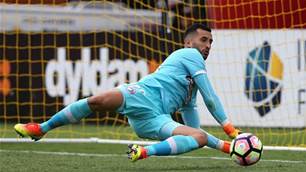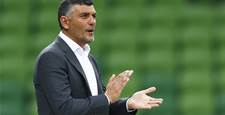The A-League club representative body, the AFPCA, have released their blueprint for an independent A-League.
Among a variety of proposed changes to the competition, A-League clubs are angling for a far higher proportion of television revenue, with clubs aiming for 90% of the money from Foxsports and Channel 10's broadcast agreements.
Of that sum, a proportion would be channelled into the PFA and state federations to assist grassroots development. This is a vast increase from the 65% split the A-League received in 2016/17.
The clubs argue that they account for 90% of the game's television revenue, therefore they should control the flow of the majority of that revenue. The A-League clubs are also demanding greater financial transparency, hitting out at FFA's "summary attribution" profit / loss statements provided so far.
In addition to advising the creation of a new, independent A-League marketing agency to act centrally on behalf of all clubs, the AFPCA are justifying the need for greater control by highlighting the relative instability of the current A-league governance model, when compared to other sporting competitions.
According to the AFPCA's blueprint, there have been 10 club dissolutions or licence returns since 2007, while ownership changes are nearly 60% higher than in the MLS. The A-League - with an average attendance just over 10,000 in 2018 - was also 2,000 people lower per match than Rugby Union and 16,000 lower than the Big Bash.
"The APFCA believes that the transition to an independent League will lead to improved governance outcomes by reducing conflicts of interest in league-related decisions and bringing the competition’s governance framework more closely into line with best practices in other Australian sports and the world’s most successful FIFA-aligned football leagues," the APFCA's blueprint said.
"The challenges faced by Australia’s professional football clubs are not in dispute. The FFA’s Whole of Football Plan acknowledges: “Australian club football has great momentum, but continues to lack the type of scale, reach and commercial revenues required if they are to become the most popular in Australia.
"Furthermore, football operates in the most competitive professional sporting market in the world in the face of strong, well-financed competitor codes.”
"Ultimately, the current situation has put the A-League in a vicious cycle. The most effective way to boost the popularity and sustainability of the League is to improve the quality of football played on the pitch.
"However, the commercial challenges faced by A-League clubs – combined with concerns over the competition’s existing governance arrangements – have been a handbrake on efforts to do that. In the absence of a measurable and sustained increase in the value of A-League licences, it is difficult for clubs to commercially justify increased investment in their facilities, on-field and off-field capabilities."
The A-League clubs are also angling for an increase in foreign players, citing crowd attendances after Alessandro Del Piero's arrival at Sydney FC, the positive influence of MLS 'designated players' on social media engagement in the United States, and the fact EA Sports FIFA 18 player ratings rated foreign players, on average, eight points above domestic Australians.
The APFCA initially have advised retaining the five visa player slots, however with an annual review set to take place. The blueprint cited examples such as the Saudi Pro League, who have implemented eight visa players per side.
The organisation reject claims that this would have a negative effect on homegrown player pathways, instead recommending that the allowable amount of substitutes on the bench per side is increased to seven, with the additional two saved for footballers under 23-years-old.
Related Articles

Socceroo-in-waiting seals Championship deal

Fringe Socceroo swerves A-League to remain in Europe after Fulham exit













